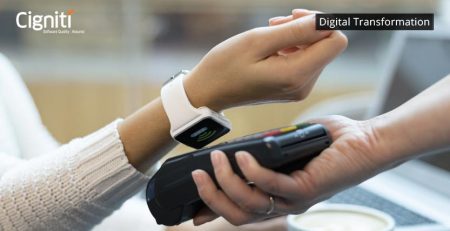Transitioning back to normalcy with the help of technology
Singapore has started reopening educational institutes, public transport, and businesses in a phased manner. The city hopes to reopen most of its economy by the end of this month.
After months of public restrictions and lockdowns, several other countries are planning to lift the barriers and instill a sense of normalcy among the citizens. Although, we still haven’t controlled the COVID-19 virus completely, the reopening measures are being taken for recovering the impact on the economies across the world. As nations try to find the ideal balance between public health and economic health, technology becomes their savior.
Google and Apple are working together to develop a technology to contain the pandemic and streamline the shift back. Sundar Pichai and Tim Cook have reportedly said, “Through close cooperation and collaboration with developers, governments, and public health providers, we hope to harness the power of technology to help countries around the world slow the spread of COVID‑19 and accelerate the return of everyday life.”
In the beginning of this year, when the global population was confined within the boundaries of their homes, technology and digital solutions eased the transition. Now, when there are plans to transition back to the previous state, technology will be playing a key role here too. Even if the reopening is supposed to be the initiation of the new normal, it is expected to be significantly different than the world that we knew before the lockdowns. During the lockdown period, the digital technology solutions facilitated smooth communication and continuity. After the lockdown eases, these solutions will be necessary to thread multiple services together without compromising the safety and security of anyone.
Contact tracing, social monitoring, and surveillance
Social distancing is the key to preventing the spread of the pandemic and was the reason for enforcing the stringent lockdowns. Even though the lockdowns are being lifted, it is necessary to practice social distancing in public places. Several technologies are being developed to establish an efficient and secure way of contact tracing, social monitoring, and public surveillance. Contact tracing technologies can help track the spread of the virus and notify those who have come in contact with the infected person. These technologies are available in the form of apps and wearable devices, using Bluetooth or location information to aid the tracing process. Similarly, organizations are working on detectors that sends alerts if the social distancing protocols are not being followed. Combined with the security cameras as well as thermal cameras, the data gathered from the detectors can help chalk out a practical and rational way of repurposing or restructuring a public spaces like offices and schools. Thermal cameras also accelerate the screening of individuals in crowded areas. Unlike the hand-held infrared screeners that detect the temperature of one individual at a time, thermal cameras can detect up to 16 persons, thus speeding up the screening process at the entry points.
Contactless payments and zero-touch technology
The retail scenario is all set to transform, with online orders take prominence due to safety concerns. Amidst the lockdown, when the brick-and-mortar stores were closed, online shopping and ecommerce popularity spiked. An impressive 146% increase has been reported in all online orders and a 68% year-over-year (YoY) growth in the online revenue was registered for the U.S. retailers by mid-April. As the physical stores open, they need to enforce smart solutions to make sure that customers feel safe and comfortable making an in-store purchase. In addition to the thermal screening and general hygiene protocols, retail stores should be looking at zero-touch technology solutions.
Also read: Quality assurance – An imperative in the world of zero-touch technology
A survey by Mastercard revealed that 51% of the U.S. consumers are using cash either less often or not at all since the beginning of the pandemic. As Linda Kirkpatrick, President of U.S. issuers at MasterCard says, “What we’re really seeing during this crisis period is a consumer behavioral shift to leveraging contactless products. If you’re at a grocery store or a drug store where a consumer should avoid touching a terminal or coming into contact with the cashier, what contactless products really provide is an avenue to shop safely.”
Tackling cyber attacks during the transition
While the world is fighting a highly contagious virus that caused a global health crisis, malicious cyber elements have been working to attack the vulnerable cyber targets. Cyberattacks have only increased since we got a pandemic on our hands to deal with. The hackers are exploiting the situation to cash in their malevolent intentions. The Australian Prime Minister, Scott Morrison, talked about the cyber attacks on the country and said, “a state-based cyber actor is targeting Australian organizations across a range of sectors, including all levels of government, industry, political organizations, education, health, essential service providers and operators of other critical infrastructure.”
Also read: Tackling the Maze ransomware attack with security testing
After scaling up the remote work and collaboration tools for employees starting work from their homes, strengthening their network infrastructure, and implementing strong cybersecurity measures, firms now need to plan a back-to-work security strategy as well. If they are not careful, the vulnerabilities exposed by remote working can prove catastrophic for the organization or even governments as in the case of Australia.
How can we help
The pandemic has attested to the fact that digital transformation and technology will continue to be an integral part of our lives. Cigniti’s Digital assurance & testing solutions address the multi-faceted needs of digital transformation, while keeping agility and customer centricity at the core of our services. We conduct comprehensive testing across your digital value chain encompassing digital marketing, web portals, web content, digital assets, web analytics, as well as the entire digital ecosystem including cloud, mobility, big data, and connected devices.
We have developed a dedicated Digital Testing Center of Excellence that comprises checklists, frameworks, processes, testlets, methodologies, and best practices to ensure effective and efficient validations of text, images, and videos of applications across devices. Our methodologies, techniques, and specialists ensure that the apps are thoroughly validated for User Experience (UX) and cover responsive web design patterns, screen resolutions, accessibility, usability, content, and navigation.
Schedule a discussion with us today and understand how our digital assurance capabilities can help your organization ease the back-to-normal transition.





Leave a Reply